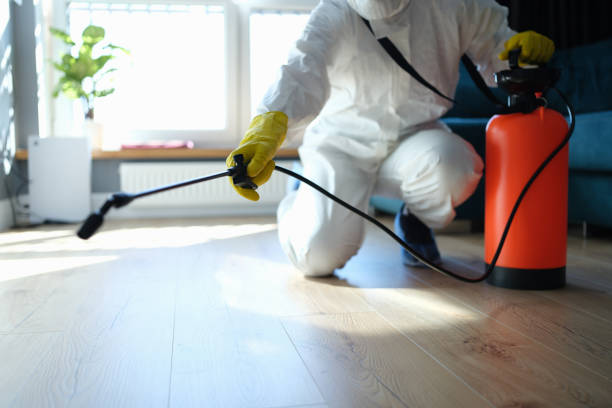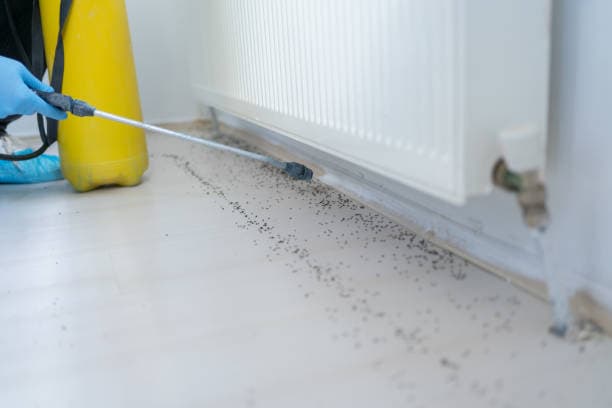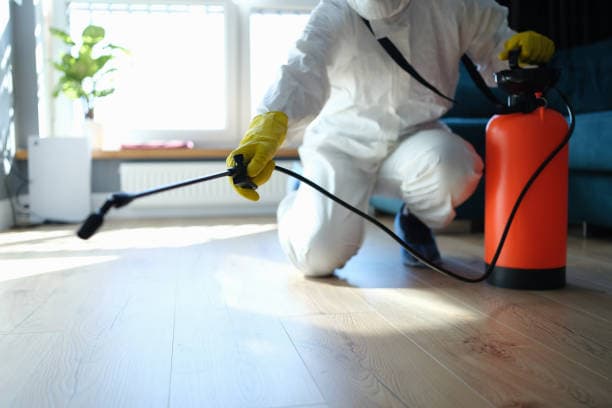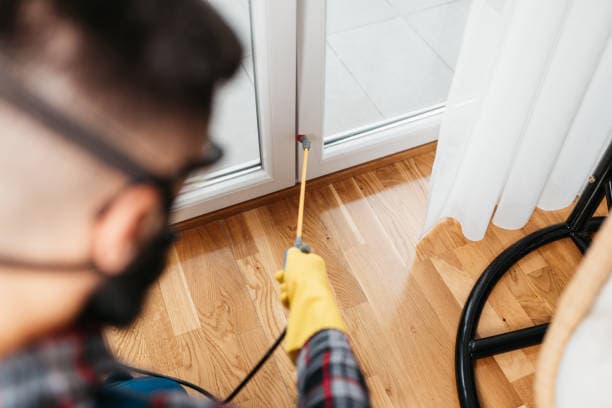The Ultimate Guide to Residential Pest Control: Tips for Homeowners
Celebrity Style Steals: Get the Look for Less

The Ultimate Guide to Residential Pest Control: Tips for Homeowners
Pests in the home are an unwelcome nuisance. Whether it’s ants marching across your kitchen counter, a rat scurrying across the attic, or termites silently eating away at your home’s structure, pests can pose serious health risks, cause property damage, and make you feel uncomfortable in your own living space. Thankfully, residential pest control is a proactive approach that helps homeowners protect their homes from these unwanted guests.
In this comprehensive guide, we’ll explore everything you need to know about residential pest control. From understanding the types of pests that commonly infest homes to offering practical tips on prevention, treatment, and management, we’ll provide you with expert advice to ensure your home remains pest-free.
The Importance of Residential Pest Control
Residential pest control is vital for the health, safety, and comfort of everyone in your home. Without effective pest management, you may experience the following issues:
-
Health Risks: Pests can carry harmful bacteria, viruses, and parasites that can lead to health issues. Cockroaches, rodents, and mosquitoes, for example, are known vectors for diseases that can affect humans and pets.
-
Property Damage: Termites, carpenter ants, and rodents can cause severe damage to your property. Whether it’s a termite infestation eating away at the structural wood of your house or rodents chewing on electrical wires, the cost of repairs can quickly add up.
-
Unwanted Stress: Dealing with pests can be stressful, especially if the infestation goes undetected for a long time. Having pests in your home can also lead to anxiety and discomfort, affecting your peace of mind.
-
Cost Savings: Preventative pest control is often much more cost-effective than dealing with a full-blown infestation. By identifying and addressing pest problems early, you can save money on expensive repairs and health-related issues.
Common Pests in Residential Homes
Understanding which pests are most likely to infest your home can help you take proactive measures to prevent them. Below are some of the most common pests homeowners encounter:
1. Ants
Ants are one of the most common pests found in homes. They are often attracted to food sources, particularly sugary substances. Carpenter ants, in particular, can cause structural damage by tunneling into wood.
- Types: Odorous house ants, carpenter ants, fire ants, and sugar ants.
- Risk: Contamination of food, structural damage (in the case of carpenter ants), and painful stings (fire ants).
2. Cockroaches
Cockroaches are resilient pests that thrive in warm, dark environments like kitchens and bathrooms. They carry diseases such as Salmonella and E. coli and can trigger allergies and asthma in some individuals.
- Types: German cockroach, American cockroach, Oriental cockroach.
- Risk: Contamination of food, spread of diseases, allergic reactions, and asthma attacks.
3. Termites
Termites are wood-destroying insects that can silently damage the structure of your home. A termite infestation can go unnoticed for months or even years until the damage becomes extensive.
- Types: Subterranean termites, drywood termites, dampwood termites.
- Risk: Severe structural damage to wood, walls, and foundations, leading to costly repairs.
4. Rodents (Mice and Rats)
Rodents are one of the most destructive pests in homes. They are known to gnaw on wires, insulation, and wood, leading to potential fire hazards. Additionally, rodents are vectors of diseases like Leptospirosis and Salmonella.
- Types: House mice, Norway rats, roof rats.
- Risk: Property damage, contamination of food, spread of diseases, and allergic reactions to droppings and urine.
5. Bed Bugs
Bed bugs are small insects that feed on human blood. They often hide in cracks and crevices in beds, furniture, and walls. Although they do not transmit diseases, their bites can cause itching, discomfort, and anxiety.
- Types: Cimex lectularius (the common bed bug).
- Risk: Bites that cause itching, allergic reactions, and psychological stress.
6. Mosquitoes
Mosquitoes are more than just an annoyance—they can transmit serious diseases such as Zika virus, West Nile virus, and malaria. Mosquitoes breed in stagnant water, making homes with standing water sources particularly susceptible.
- Types: Aedes mosquitoes, Culex mosquitoes, Anopheles mosquitoes.
- Risk: Transmission of diseases, painful bites, and allergic reactions.
How to Prevent Pests in Your Home: Essential Tips for Homeowners
Prevention is key when it comes to residential pest control. By taking the right precautions, you can minimize the likelihood of pests invading your home. Here are some essential tips to keep your home pest-free:
1. Seal Entry Points
Pests enter your home through gaps, cracks, and openings. Inspect your home’s exterior regularly and seal any potential entry points, such as gaps around windows, doors, pipes, and vents. Ensure that window screens are intact and that doors close properly.
- Tip: Use weather stripping on doors and windows to prevent gaps.
2. Keep Your Home Clean
A clean home is less attractive to pests. Ants and cockroaches are particularly attracted to food crumbs, grease, and spilled liquids. Regularly vacuum, mop floors, and wipe down surfaces to eliminate food sources that may attract pests.
- Tip: Store food in airtight containers, and don’t leave food out overnight.
3. Eliminate Standing Water
Many pests, such as mosquitoes and termites, require moisture to thrive. Fix any leaky pipes, faucets, or appliances that may create standing water. Additionally, ensure that gutters are clear of debris and water can flow freely.
- Tip: Use dehumidifiers in damp areas like basements and bathrooms to reduce moisture levels.
4. Trim Overgrown Plants and Trees
Plants and trees that are close to your home can provide a pathway for pests to enter. Trim tree branches that overhang the house and keep plants well-maintained. Keep bushes and shrubs away from windows and walls to reduce the chance of pests accessing your home.
- Tip: Rake leaves and remove plant debris around your property, as these can harbor pests.
5. Use Natural Pest Repellents
For a more eco-friendly approach, you can use natural pest repellents like essential oils (e.g., peppermint, eucalyptus, citronella) to keep insects at bay. These oils can be diluted with water and sprayed in areas where pests are likely to enter.
- Tip: Place bay leaves, cloves, or cucumber slices in areas where you’ve noticed pests, as these are known to repel ants and cockroaches.
6. Proper Waste Management
Ensure that trash bins are sealed tightly and are emptied regularly. Pests such as rodents and flies are often attracted to waste. Store trash in containers with secure lids and keep your outdoor trash area clean and free from food waste.
- Tip: Clean trash bins regularly with soapy water and disinfect them to remove any residue that may attract pests.
Professional Pest Control: When to Call the Experts
While DIY pest control methods can be effective for minor problems, some infestations require the expertise of a professional pest control company. Here are some signs that you may need professional pest control services:
1. You Notice Significant Damage
If you notice signs of significant damage, such as chewed wires, holes in walls, or wood that sounds hollow when tapped (a sign of termites), it’s time to call in a pest control expert. They can assess the damage and offer solutions to eliminate the problem.
2. You See Pests in Large Numbers
Seeing a few ants or cockroaches may not be a big deal, but if you notice large numbers of pests regularly, there may be a bigger problem. A professional pest control service will not only eliminate the pests but also help identify the source of the infestation.
3. You’ve Tried DIY Solutions Without Success
If you’ve attempted DIY pest control methods without success, professional pest control may be necessary. Experts have access to stronger treatments, tools, and equipment to tackle even the most stubborn infestations.
4. Health Risks Are Present
If pests in your home are spreading diseases or causing health issues, it’s crucial to seek professional help immediately. Cockroaches, rodents, and mosquitoes are known to spread harmful diseases, and a professional pest control company can offer safe and effective treatments to eliminate them.
5. You Want Long-Term Solutions
Professionals can not only treat the current infestation but also provide long-term solutions to prevent future problems. Regular monitoring, exclusion methods, and environmentally friendly treatments can ensure your home remains pest-free for the long haul.
Conclusion
Residential pest control is an essential part of maintaining a healthy, safe, and comfortable home. By taking preventive measures, understanding the types of pests that pose a threat, and calling in the experts when necessary, you can protect your home from the damaging effects of pests. Implementing a proactive pest control strategy will save you time, money, and stress, while ensuring that your home remains free of unwanted visitors.
Remember, a pest-free home is not just about eliminating pests—it’s about creating a safe and secure environment for you and your family. By following the tips outlined in this guide, you can take charge of pest control and enjoy peace of mind knowing your home is well-protected.


